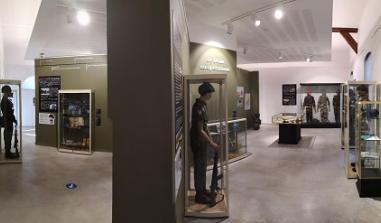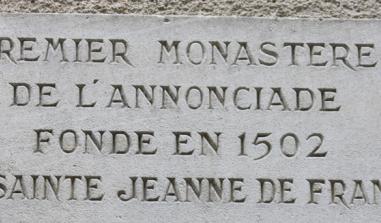Montrond Fortress
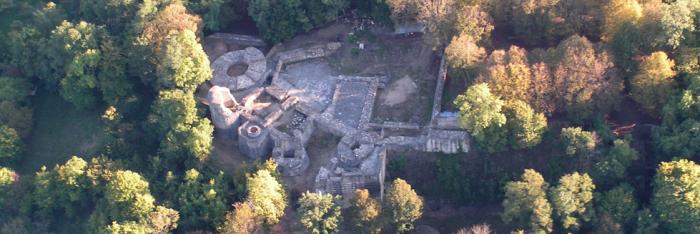
Saint-Amand-Montrond, vue aérienne de la forteresse. Source : forteresse-montrond.fr
The fortress, located on the hill at Montrond, provides a unique panoramic view of the development of military architecture from the 13th to the 17th century
The fortress, located on the hill at Montrond, at the confluence of the Cher and Marmande valleys, provides a unique panoramic view of the development of military architecture from the 13th to the 17th century. The restoration of the fortress, mainly based on voluntary, also contributes to the originality of its history. The first building was constructed on this site in 1225 on a mound approximately forty metres high, overlooking the Cher and Marmande valleys. The base of a robust, cylindrical"Philippian"keep, 16 metres in diameter and with walls over 4 metres thick at the base, was uncovered between 1977 and 1980.
A major reconstruction campaign was led by Charles d'Albret in the early 15th century, after the destruction wrought by the English. Restoration of the site, badly damaged by the conflicts in the 16th century, was led in the 17th century by Maximilien de Béthune, Duc de Sully who bought the Chateau in 1606, later followed by the Condés. Sully converted it into a residence, restoring, enlarging and embellishing the old fortified castle to turn it into a luxurious residence, in the tastes of the day and in line with his wealth. He also modernised the defences, which had not kept pace with the development of artillery. He sold the chateau to Henri II de Bourbon, prince of Condé, in 1621. Henri completed Montrond's conversion into a redoubtable fortress that would cause great concern to the Royal forces during the Fronde rebellion. For the fortifications, he employed a specialist, Jean Sarrazin, known as the "Prince's Mathematician" or "the intendant of fortifications". Sarrazin worked for over ten years on the design and construction of the powerful network of fortifications reinforced by tiers of bastions up the side of the hill, which inspired other French, Italian and Dutch military engineers of his time.
Finished around 1650, Montrond Fortress was considered to be one of the strongest in France. It is an example of reinforced façade fortification, using a line of constructions on several tiers, depending on the topography of the hillside. These were separated by numerous ditches dug into the rock which were often connected by underground passages. This is also the only example of this type of fortification in the center of France. During the Fronde rebellion, Montrond was the last du Berry and du Bourbonnais stronghold to hold out against the Royal armies. The siege began in October 1651 and only ended on 1st September 1652, with the capitulation with a garrison that was exhausted, starving and decimated by disease. Mazarin ordered the fort to be demolished, with most of the reinforced façade works and entrances to the underground paths mined. The Chateau was abandoned around 1735. It was used as a source of stone by the inhabitants of Saint-Amand in the revolutionary period and converted into a public promenade from 1834. The site will experience ultimately a renaissance in 1970, thanks to the initiative of young volunteers and the creation of an association, Chase Even today, the rehabilitation of the fortress continues, with ever-new discoveries.
Association C.H.A.S.A 10, Allée du Prince de Condé 18200 Saint Amand Montrond Tel: +33 (0) 248 96 79 64 Fax: +33 (0) 248 96 47 36 e-mail: chasa.montrond@wanadoo.fr Guided tours 1th April- 30th September Every day except Monday Timesof tours: 10.00am, 2.00pm, 4.30pm Outside of this period and these hours, tours are available on request.
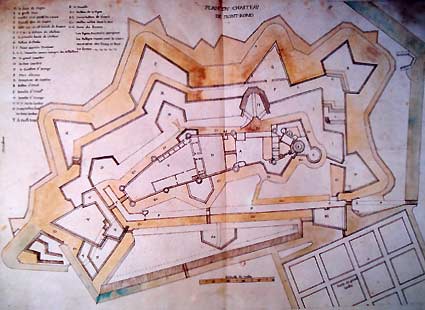
Ground plan of the Château de Montrond, circa 1650. Source: BNF
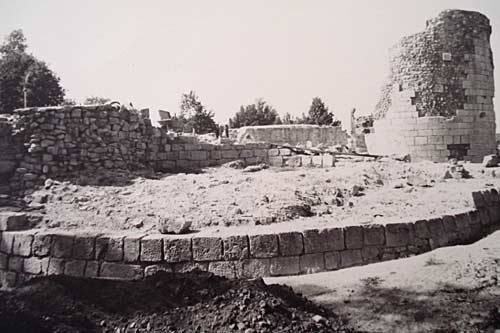
Base of the keep in 1982. Source: Association C.H.A.S.A.

Aerial view of the site. Source: Association C.H.A.S.A.
Practical information
18200
Saint Amand Montrond
02 48 96 79 64
Adultes: 4 € Enfants (de 9 à 16 ans): 2 € Groupes (à partir de 10 personnes): 3 €
Visite avec un guide obligatoire Départs des visites: 10h, 14h, 16h30
Fermé le lundi


